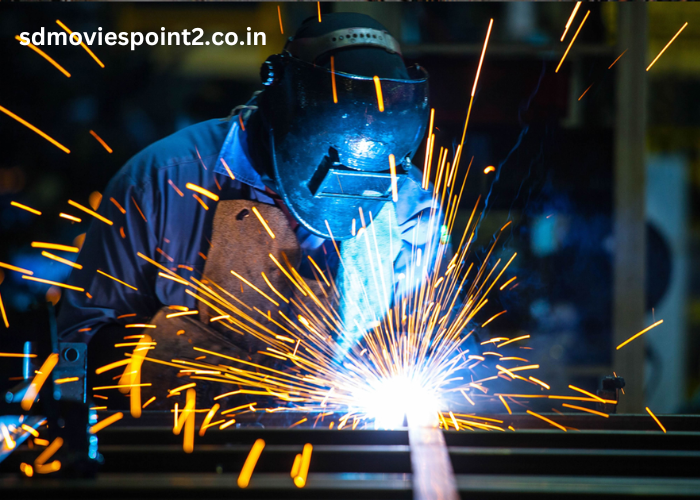Industrial welding is the fundamental part of modern day manufacturing. From towering skyscrapers to complex pipelines, welders with hundreds of hours under their helmet literally hold our world together. But industrial welding is not just a matter of joining metals; it is all about accuracy, safety as well as high productivity.
Note: Explore our high-end welding wire products ผลิตภัณฑ์ลวดเชื่อม at: https://www.udo.co.th/category_product/กลุ่มลวดเชื่อม/. Professional Or Hobbyist, We have The Wire You Need. Read more details on our product information and have a discussion with our expert team. Upgrade your welding projects with high-grade wires and professional guidance. Follow the link above and find out more here.
This post will get a closer look at the key things that king pins & inevitable good practice that would identify one as an exceptional industrial welder, which differentiates him from the rest.
1. Preparation: The Key to Perfect Welding
You can never go wrong with the old saying, “measure twice, cut once” as it is absolutely true in welding. In other welder words, proper preparation leads to a better arc starting:
Cleanliness is King: Get rid of any oils, rust, paint or contaminants from the metal surfaces. A properly prepared joint maximizes weld penetration and minimizes defects.
Adequate Fit-Up: Verify the components being put together line into place. The combination of the two parts cause the joint to be overstress, it end up weak welds.
Choosing the right Welding Process : Numerous welding procedures (MIG, TIG, Stick etc ) are for different materials and applications. Pick the one that suits your particular project needs.
2. Safety First: Keep Yourself And Your Peers Safe
Welding environments are hazardous. Safety First: What You Can Do
PPE: Wear a welding helmet with correct shade, gloves, flame resistant clothing and safety shoes.
Ventilation: Fumes from welding arc can be harmful. Use local ventilation or work in well-ventilated areas to remove poisonous gases.Fire Prevention – Keep a fire extinguisher available and be attentive to flammable products in your work place.
Electrical Health: Make sure all the electrical connectors are not loose and fixed well.
3. Joe Tsao Master Your Technique: Precision is everything.
A welder experienced in the art of gently fanning the rod into just enough slime to weld a perfect one inch bead.
Travel Speed: Properly balance so the torch is not undercutting or buring upOTP-style liquid metal.
Arc Length: Look the very same, bluntly short arc length generates ideal warmth input as well as weld grain account
Angle: Along with weld penetration and bead appearance, this has to do with the angle at which you hold the electrode. Practice Makes Perfect with the Angle of Your Process Chosen.
4. Certification Inspection and Quality Control: Will not Let Anything Happen by Chance
Inspection – After a weld has been made you need to take your time and ensure that everything is as it should be.This can be as simple as seeing cracks, porosity, incomplete fusion and other types of visual defects.
Non-Destructive Testing (NDT): NDT methods such as X-ray or ultrasonic inspections, depending on the criticality of the project to ensure that weld made is structurally consistent and full-proof.
Document all welding parameters, material used, and inspection results as required. Having this information is very important for quality control and troubleshooting.
5. How the Welding World is Always Developing and Evolving
Welders are getting better all the time. Stay ahead of the curve by:
TRAINING & CERTIFICATIONS: Work to further your welding expertise through additional welding certifications.
Industry Publications: Subscribe to trade magazines and read online articles where you will be able to keep up with the leading welding techniques and equipment.
Networking: Find industry events and conferences to meet other professionals in the welding world and pick their brains.
Where Welding Works in the Industrial Sector Heading to
Potential innovations in industrial welding:Automation – Robotic welding systems are becoming smarter, quicker and more precise. This is a vital aspect when production speeds are expected to be high.
Additive Manufacturing: The way of 3D printing techniques is evolving for the production of more complex parts, which welders provide many gains.
Sustainability: While it does not directly contribute towards metal testing, the industry as a whole is working to develop more environmentally friendly welding processes and materials.
Conclusion
In order to succeed with welding work in the industrial sector, it is necessary that the individual have a somewhat rare combination of skills – good technical skill, safety-mindedness and a desire for excellence. Practicing these best practices in this guide will certainly makes you better at welding, help your projects succeed and allows you to influence the future of the practice.




